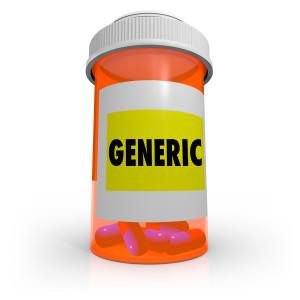 Sildenafil (Revatio) was approved in 2005 based on a 12-week study that showed improvements in six minute walk distance. In the initial study, there was not a clear difference between 20mg three times a day and higher doses. In a subsequent study that followed patients for years, the majority of patients increased their dose to 80mg three times daily and had lasting benefit. In 2012, generic Revatio became available as Sildenafil.
Sildenafil (Revatio) was approved in 2005 based on a 12-week study that showed improvements in six minute walk distance. In the initial study, there was not a clear difference between 20mg three times a day and higher doses. In a subsequent study that followed patients for years, the majority of patients increased their dose to 80mg three times daily and had lasting benefit. In 2012, generic Revatio became available as Sildenafil.
Most experts that treat PAH believe that over time patients generally do better on the higher dose (80mg) rather than the 20mg dose. As you would expect, the higher dose has more side effects. In my practice, when I start sildenafil I do so at the 20mg three times daily dose. If the medicine is well tolerated, then over the next 3-6 months I gradually increase the dose to 80mg three times daily for most patients. Some patients are adequately treated at the lower dose or have intolerable side effects at the higher dose.
I advise my patients to take their Sildenafil with meals. The medication has a fairly short half-life. Rather than space the medicine evenly every 8 hours, I find most patients do better if they take the medicine with meals. This has the added advantage of reducing side effects.
Side Effects of Sildenafil (Revatio)
The most common side effect is headache. Most patients experience mild headache for the first few days when they start this medicine. Acetaminophen (Tylenol) works very well and is safe. After a few days, most patients are accustomed to the medication and headaches are not a problem. A few patients that are prone to migraines may continue to struggle. Headaches often return for a few days after dose increases.
Other common side effects include nasal congestion, mild muscle aches and low back ache. As with headache, the achiness tends to resolve after a few days. Occasionally a patient will have more severe discomfort. Under these circumstances, we usually switch to a different medication. There is a small increased risk of mild nose bleeding. If this happens, lean forward and squeeze your nose firmly for 10 minutes. These tend to be mild and self-limited.
Vision and Hearing Issues
There are reports from studies done with Sildenafil for erectile dysfunction describing very rare hearing and vision problems. All patients should be educated that if they experience hearing or vision changes to talk with their pulmonary hypertension specialist promptly. In my experience, mild vision and hearing complaints are not uncommon but when evaluated they tend to be explained by wax impaction in the ear or cataracts that are not related to pulmonary hypertension medications or need for a new eye glass lens prescription.
Drug Interactions with Sildenafil
When combined with nitroglycerin or long acting nitrates, Sildenafil (Revatio) may cause very low blood pressure. Under no circumstances should these medications be given together. If you take Sildenafil you should not take nitroglycerin (even if you develop chest pain).
Alpha blockers (medicines that are used to treat the symptoms of an enlarged prostate) should be used with caution in combination with Sildenafil. Many patients will tolerate the medications but you should check with your physician and make sure that your blood pressure is not too low to start. Common alpha blocker agents include Hytrin, Flomax, Doxazosin.
Certain medications may affect the blood levels of Sildenafil. Always check with your physician before starting any new medications.
